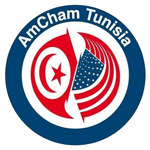The Tourism industry is estimated to support 510,000 jobs by 2021, which is 13.1% of the total jobs in Tunisia (World Travel & Tourism Council [WTTC], 2011). The tourism industry has occupied the first position for the export of services and products. In addition, the foreign receipts generated by tourism also amounted to 44% of the trade deficit (Poirier & Wright, 1993). The contribution of travel and tourism to total GDP was almost 9% in 2009 and is expected to be 14% in 2021.
The destination is also expected to welcome 9,700,000 international tourists in 2021. The tourism industry contributes indirectly to the gross domestic product of the country since it provides a great deal of employment for the construction of hotels, tourism marketing, aviation, sanitation services, fuels, purchases of food, and cleaning products (WTTC, 2011).
The tourism industry in Tunisia has been historically dominated by European tour operators (“Travel and Tourism in Tunisia,” 2009). Considered as a mass sector, tourism in Tunisia has been marketed as an all inclusive package including airfare and hotel.
In the 1990’s, 80% of the tourists came via a tour operator (Poirier & Wright, 1993). The dominant tour operators have been Tui, Thomson, and Nekerman. All of these key players have their own subsidiaries in the major European countries.
The consolidation between wholesalers made them increasingly dominant as hotels in Tunisia were not able to coordinate their prices to gain influence (“Travel and Tourism in Tunisia,” 2009). Consequently, an unbalanced relationship has been established between tour operators and hoteliers. This has forced hoteliers to sell their properties at a low rate. In an effort to boost the tourism industry, Tunisia has started to negotiate with some European countries an opening sky agreement between both of them (“Tunisia Open Sky,” 2009).
This sector is popular mainly on the east coast, totaling more than 95% of beds. The following is a list of the largest resorts and the percentge of nights out of the total:
- Monastir–Mahdia (36%)
- Hammamet (24%)
- Zarzis (24%)
- Zaghouan (10%)
- Aïn Draham (2%)






